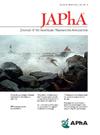Inside the pharmacy: A qualitative study uncovering community pharmacists' experiences with Paxlovid prescribing
IF 2.5
4区 医学
Q3 PHARMACOLOGY & PHARMACY
Journal of the American Pharmacists Association
Pub Date : 2025-03-22
DOI:10.1016/j.japh.2025.102390
引用次数: 0
Abstract
Background
Community pharmacists were authorized to prescribe Paxlovid to eligible patients, yet little is known about their experiences in this role. Understanding these experiences is crucial for improving patient access.
Objectives
This study aimed to 1) describe the Paxlovid prescribing process in community pharmacies and 2) explore associated barriers and facilitators.
Methods
This exploratory qualitative study involved semi-structured virtual interviews with pharmacists in Wisconsin (June-September 2023). Pharmacists were identified using the Wisconsin Department of Health Services list of pharmacies offering Paxlovid and the Pharmacy Practice Enhancement and Action Research Link network. The interview guide, pretested with one pharmacist, was informed by the Consolidated Framework for Implementation Research (CFIR). Descriptive statistics and thematic analysis guided by the CFIR were used.
Results
Five pharmacists were interviewed, including 3 in leadership roles. One represented a pharmacy partnering with 2 health systems, while another represented a health care system collaborating with 15 independent pharmacies. On average, pharmacists dispensed 130 (±142) Paxlovid doses, with eligibility screening taking 5 to 45 minutes, conducted in person, by phone, or via electronic health records (EHRs). The prescribing process involved 2 steps: 1) assessing eligibility and 2) dispensing the appropriate prescription, with slight variations based on pharmacy's EHR access. Key themes describing facilitators and barriers to Paxlovid prescribing emerged within 4 CFIR domains (i.e., inner setting, outer setting, individual characteristics, and process). Major barriers included limited access to patient health information and inadequate reimbursement. Facilitators included access to decision-making support tools, compatibility, and the ability to screen and counsel patients remotely.
Conclusion
Community pharmacists are vital to expanding access to Paxlovid but struggle with limited access to patient health information and inadequate reimbursement. Ensuring EHR access and advocating for provider status will enhance patient care. Involving pharmacists in public health program design can optimize resource allocation and effectiveness.
药房内部:揭示社区药剂师处方Paxlovid经验的定性研究。
背景:社区药剂师被授权为符合条件的患者开Paxlovid,但对他们在这一角色中的经验知之甚少。了解这些经历对于改善患者获取至关重要。目的:本研究旨在1)描述Paxlovid在社区药房的处方过程,2)探索相关的障碍和促进因素。方法:本探索性定性研究涉及对威斯康星州药剂师的半结构化虚拟访谈(2023年6月至9月)。药剂师是通过威斯康星州卫生服务部提供Paxlovid的药店名单和药房实践增强和行动研究链接网络确定的。访谈指南由一名药剂师预先测试,由实施研究综合框架(CFIR)提供。采用了CFIR指导下的描述性统计和专题分析。结果:5名受访药师,其中3名担任领导职务。一个代表与两个卫生系统合作的药房,另一个代表与15个独立药房合作的卫生保健系统。平均而言,药剂师分配了130(±142)剂Paxlovid,资格筛选需要5至45分钟,通过亲自,通过电话或通过电子健康记录(EHR)进行。处方过程包括两个步骤:1)评估资格和2)分配适当的处方,根据药房的电子病历访问略有变化。描述Paxlovid处方的促进因素和障碍的关键主题出现在四个CFIR领域(即内部环境、外部环境、个体特征和过程)。主要障碍包括获得病人健康信息的机会有限和报销不足。辅助因素包括获得决策支持工具、兼容性以及远程筛查和咨询患者的能力。结论:社区药师对扩大Paxlovid的可及性至关重要,但难以获得有限的患者健康信息和不充分的报销。确保电子病历访问和倡导提供者地位将加强患者护理。让药师参与公共卫生项目设计可以优化资源配置,提高效率。
本文章由计算机程序翻译,如有差异,请以英文原文为准。
求助全文
约1分钟内获得全文
求助全文
来源期刊
CiteScore
3.30
自引率
14.30%
发文量
336
审稿时长
46 days
期刊介绍:
The Journal of the American Pharmacists Association is the official peer-reviewed journal of the American Pharmacists Association (APhA), providing information on pharmaceutical care, drug therapy, diseases and other health issues, trends in pharmacy practice and therapeutics, informed opinion, and original research. JAPhA publishes original research, reviews, experiences, and opinion articles that link science to contemporary pharmacy practice to improve patient care.

 求助内容:
求助内容: 应助结果提醒方式:
应助结果提醒方式:


